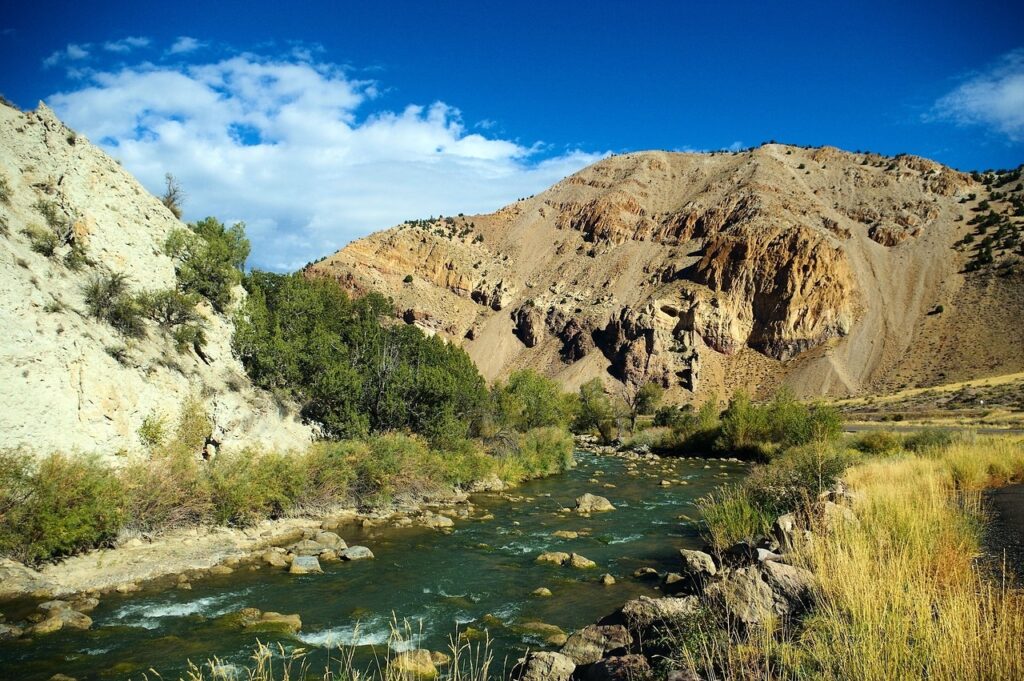On January 25, 2024, the Supreme Court of Nevada issued an important decision in the long running dispute over pumping groundwater from the Coyote Springs Valley north of Las Vegas to supply a housing development for 250,000 people. The dispute underlying Sullivan v. Lincoln County Water District LLC, 140 Nev. Adv. Op. 4 (2024), started in 2001 and this decision does not end the dispute. The State Engineer initially held the applications for groundwater permits in abeyance to determine whether the groundwater pumping would impact the flow of water in other designated water basins, including the fully appropriated Muddy River. Twenty-three years later, the legal battle rages on.
In Nevada, water rights acquired prior to 1913 are “vested” and cannot be impaired by permits granted after that date. The Muddy River rights are pre-1913 rights. In 2001, the State Engineer held the applications for groundwater permits in abeyance and, in Order 1169, indicated that uncertainty existed as to the amount of groundwater that remained to be appropriated. The order also directed water rights holders in one of the basins, Coyote Springs Valley, to conduct a pump test. In 2012, the State Engineer issued Order 1169A, based on pump tests. In that order, the State Engineer determined that the pump test impacted the fully appropriated Muddy River by reducing the flow of its headwater springs. In addition, the pump test impacted five other previously separately delineated basins. He consequently denied hundreds of permits for new groundwater permits across the several basins.
In 2019, through Order 1303, the State Engineer combined five of the basins into one “super basin” due to concerns that existing groundwater rights contributed to over appropriation of water throughout the area. As a result, water rights would now be administered throughout the new super basin based on priority, meaning that some previously granted groundwater permits would be revoked due to interfering with pre-1913 water rights in the Muddy River. Impacted water rights holder petitioned the district court for judicial review. The State Engineer subsequently added another basin to the super basin in Order 1309. This order also limited pumping to no more than 8,000 afa to prevent impacting the Muddy River and Moapa Dace.
The district court found that the State Engineer lacked authority to create a super district out of multiple existing districts, jointly manage water across the new district, and to conjunctively manage surface water and groundwater. In addition, the court found that the State Engineer violated the due process rights of water rights holders. The State Engineer and several other parties appealed.
The Supreme Court of Nevada reversed the district court in most respects. The court stated that the State Engineer only has those powers that are explicitly or implicated delegated by the state legislature. Implied authority is limited to that “essential to carrying out an express duty.” Sullivan, at *5. The court reasoned that, although the state laws did not explicitly give the State Engineer authority to combine basins, administer permits across the new basin, and conjunctively manage groundwater and surface water, the State Engineer had implicit authority to do so.
Although the court relied on several state laws in its opinion, the main source of implicit authority was found in a statute, NRS 533.085, that protects pre-1913 water rights. NRS 533.085 states:
Nothing contained in this chapter shall impair the vested right of any person to the use of water, nor shall the right of any person to take and use water be impaired or affected by any of the provisions of this chapter where appropriations have been initiated in accordance with law prior to March 22, 1913.
The court reasoned that the state engineer could not protect the Muddy River vested water rights without taking extraordinary action, as he did in this case. Therefore, NRS 533.085 implicitly gives the State Engineer authority to conjunctively manage groundwater and surface water, and to combine separately delineated basins into a single super basin for management and permitting purposes.
Although the Court relied mainly on NRS 533.085 for its decision, the opinion noted other statutory provisions that support the State Engineer’s implicit authority. NRS 533.370(2), for example, requires the State Engineer to reject applications for water rights “where its proposed use or change conflicts with existing rights.” The term “basin” in the Nevada statutes (not defined in the statutes) was also construed broadly to give the State Engineer implicit authority to conjunctively manage and jointly administer groundwater and surface water.
The court also found that the respondents had notice and opportunity to be heard. Therefore, no due process violation existed.
The court sent the matter back to the district court to hold hearings to determine whether the State Engineer’s order is backed by substantial evidence. Therefore, the court proceedings continue.
This case is important because the State Engineer was granted rights to administer groundwater and surface water rights together without explicit authority from the state legislature. The court implied this authority. The application of a version of Dillon’s Rule was extraordinary, stretching implied authority far beyond a typical strict construction. Since groundwater rights are almost always junior to surface water rights, groundwater permits issued decades ago in Nevada may now be revoked. The overall impact may severely limit the availability of groundwater for future uses and, as in this case, create uncertainty about whether existing groundwater permits are secure. The decision continues a judicial trend of closely examining groundwater and surface water connections.
This NALC guest article is authored by Jesse Richardson, who is a Professor of Law and Lead Land Use Attorney at the Land Use and Sustainable Development Law Clinic at the West Virginia University College of Law. Professor Richardson’s research and experience focus is on energy law, agricultural law, land use law, and water law.
